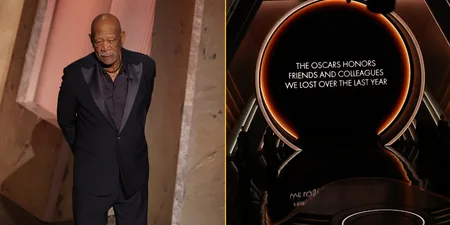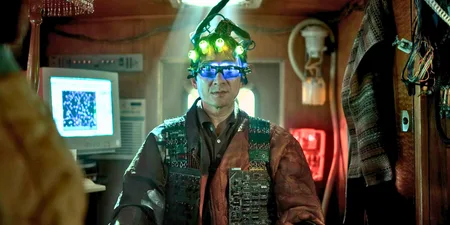The trailer was amazing. The movie was amazingly bad
Released in cinemas in early March 2011, there was a lot of excitement around Battle: Los Angeles.
It had a great young (at the time) cast, including Aaron Eckhart, Michelle Rodriguez, Michael Pena, Bridget Moynahan and… eh… Ne-Yo.
It had an up-and-coming director in Jonathan Liebesman and was produced by Neil H. Moretz, who was on a hot streak, with Fast Five also due to arrive in cinemas that same year.
But, more than anything else, Battle: Los Angeles had an incredible trailer. If you’ve never seen it, or haven’t watched it in a while, check it out again here:
Clip via Sony Pictures
Looks great, right? Kind of like Black Hawk Down meets War of the Worlds.
Obviously, with 10 years of distance to put between us, it doesn’t quite hold up, but in 2011, this trailer was phenomenal. It is actually staggering how many of the practices that are now commonplace in trailers in the 2020s are already in place here.
Creepy slow song playing out over the action to give a sense of importance? Check. (To this day, it is still one of the highest results on a Google search for the movie, and it is Johann Johannson’s ‘The Sun’s Gone Dim’.)
Barely any plot being given but loads of action shots, to make it seem more manic and action-packed than it actually is? Yes. (Aside from “aliens are attacking LA”, could you make a guess at any other plot points from that trailer?)
Loads and loads and loads of glimpses of the money shots, but no actual footage of whatever the big bad is? Absolutely. (This was a practice that the filmmakers of 2014’s Godzilla would adopt for the entire film.)
Starting off with slow, lingering shots of things before SUPERRAPIDEDITSMAKEITSEEMMUCHMOREEXCITINGATTHEEND?
Present and correct. (It is difficult to find a single blockbuster trailer from the last decade that doesn’t do this exact same thing.)
Obviously, it is the job of the marketers within each company to make their movies look as fantastic as possible, so complaining about a movie’s trailer is akin to complaining about a book’s cover. We all know better, because a good trailer doesn’t mean a good movie (hello, Suicide Squad), and a bad trailer doesn’t mean a bad movie (hi there, Game Night).
But 10 years on, the sheer gulf between the quality of the trailer and the quality of the finished product has not been matched. Releasing in cinemas, the $100 million production made $35 million in its opening weekend in the US, and by the end of its run, it had made $211 million worldwide, landing 32nd for the yearly charts, behind Alvin And The Chipmunks: Chipwrecked and the Adam Sandler comedy, Just Go With It.
While not exactly a flop, that is a disappointing result for a movie that many considered might be one of the best and biggest blockbusters of the year, and a lot of that comes down to the sourness left in those who did see the movie, the free fall of disappointment as they watched the finished movie and realised that it was… well… crap.
Scoring 36% on Rotten Tomatoes, some of the review quotes from the time are absolutely savage:
Roger Ebert – “Noisy, violent, ugly and stupid.”
We Got This Covered – “Battle: Los Angeles misses every mark it aims for. Aside from the well done special effects nothing in this movie is worth recommending.”
MSN – “This humourless film is as unimaginative – and as exhausting – as you can get.”
New Yorker – “If the talk had been surgically removed, leaving only the sights and sounds of combat, this could have been a striking, semiabstract display of aggressive energy; as it is, any viewer over twelve will go for the laughs.”
Chicago Reader – “Terminally stupid.”
There was a bite to these reviews, like everyone who was writing them felt equally hard-done-by that effective, brilliant trailer. The problem is, the marketers had done too good a job, and had inadvertently set the film up to fail.
10 years on, good trailers and bad trailers come and go, but that promotional footage for Battle: Los Angeles remains lodged in the mind, especially this year, on its anniversary of unmatched potential.







































